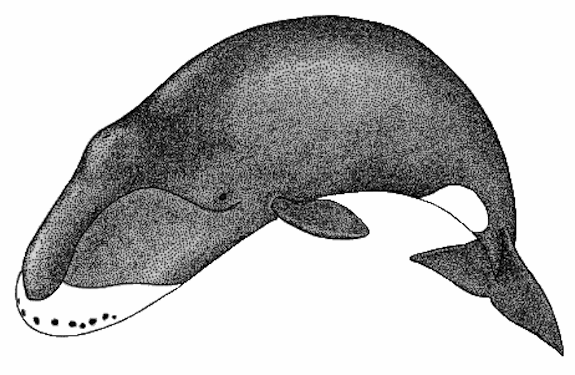There Are Whales Alive Today Who Were Born Before Moby Dick Was Written
Some of the bowhead whales in the icy waters off of Alaska today are over 200 years old
In Alaska’s North Slope, the population of bowhead whales seems to be recovering. But that’s really not the coolest part of this Alaska Dispatch story. Instead, it’s this, noticed by Geoffry Gagnon:
There are bowhead whales still alive in arctic that were born long before Moby Dick was written in 1851. That's nuts http://t.co/FjGI9EZf
— Geoffrey Gagnon (@geoffgagnon) January 8, 2013That’s right, some of the bowhead whales in the icy waters today are over 200 years old. Alaska Dispatch writes:
Bowheads seem to be recovering from the harvest of Yankee commercial whaling from 1848 to 1915, which wiped out all but 1,000 or so animals. Because the creatures can live longer than 200 years — a fact George discovered when he found an old stone harpoon point in a whale — some of the bowheads alive today may have themselves dodged the barbed steel points of the Yankee whalers.
Herman Melville wrote Moby Dick in 1851, after a brief stint on a whaling ship. (You can hear the whole book read aloud here.) Sparknotes summarizes the trip this way:
Finally, driven to desperation at twenty-one, Melville committed to a whaling voyage of indefinite destination and scale on board a ship called the Acushnet. This journey took him around the continent of South America, across the Pacific Ocean, and to the South Seas, where he abandoned ship with a fellow sailor in the summer of 1842, eighteen months after setting out from New York. The two men found themselves in the Marquesas Islands, where they accidentally wandered into the company of a tribe of cannibals. Lamed with a bad leg, Melville became separated from his companion and spent a month alone in the company of the natives. This experience later formed the core of his first novel, Typee: A Peep at Polynesian Life, published in 1846. An indeterminate mixture of fact and fiction, Melville’s fanciful travel narrative remained the most popular and successful of his works during his lifetime.
Thirty four years ago, scientists counted 1,200 whales. Today there are about 14,000 of the mammals out there. Bowhead whales get their name from their heads, says NOAA:
The bowhead whale has a massive bow-shaped skull that is over 16.5 feet (5 m) long and about 30-40% of their total body length. This large skull allows the bowhead whale to break through thick ice with its head. The bowhead whale also has a 17-19 inch (43-50 cm) thick blubber layer, thicker than any other whale’s blubber.
None of the whales in Alaska, as far as we know, are white.
More from Smithsonian.com:
/https://tf-cmsv2-smithsonianmag-media.s3.amazonaws.com/accounts/headshot/Rose-Eveleth-240.jpg)

/https://tf-cmsv2-smithsonianmag-media.s3.amazonaws.com/accounts/headshot/Rose-Eveleth-240.jpg)